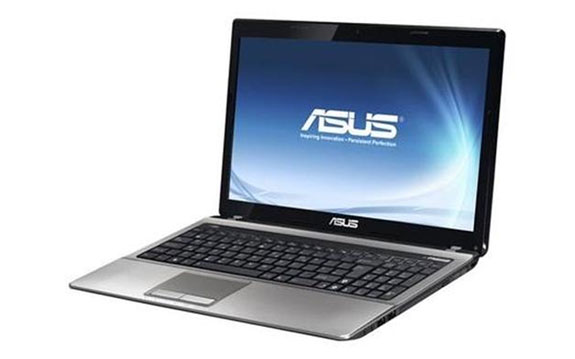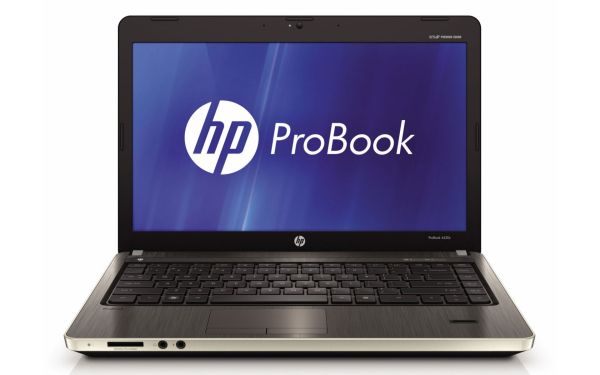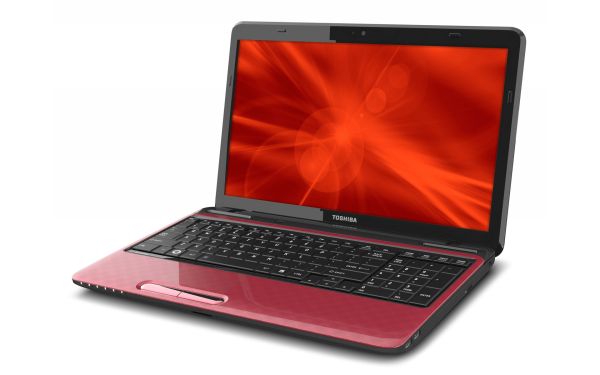Holiday 2011 Laptop Buyer’s Guide
by Jarred Walton on December 2, 2011 3:45 AM ESTBigger and Faster but Still Inexpensive: Budget Laptops
Let’s just get this out of the way: budget laptops inherently come with some compromises. I love using laptops with good quality displays, but finding a good display in a budget laptop is practically impossible. Last time I saw a decent display in something that didn’t cost over $500 (outside of tablets and smartphones), it was the ASUS Eee PC 1001P, and unfortunately a good display on an Atom-based netbook means you’re still saddled with Atom netbook performance. Outside of that one example, we haven’t tested any budget laptops in the past three years where the display was significantly better than average. Playing modern games on a budget laptop is also a stretch; AMD’s Llano (A-series) APUs may be a step up from Intel’s integrated graphics, but they still struggle to run many games at native resolution and medium quality settings. We’ll look at a budget gaming laptop below (which will cost a bit more), but the quick summary is that you have to know what you’re getting and set expectations accordingly. So just what would we recommend for around $500-$600?
Recommended Budget Laptop
Amazing what you can get for half a grand: HP ProBook 4430s for $500
Finding sub-$500 laptops is relatively easy; finding something that doesn’t have a larger-than-necessary 15.6” chassis (and still with a 1366x768 resolution) is far more difficult. I’ve mentioned in the past that 14” laptops are my personal sweet spot for mobility without compromising on other areas, and finding HP’s ProBook for $500 was a pleasant surprise. The ProBook line isn’t quite at the level of HP’s EliteBook, but you get a full-blown Sandy Bridge Core i3-2310M processor, 4GB RAM, a 320GB hard drive, and an aluminum cover, which is more than I can say for most budget laptop. The display is also a matte finish, the keyboard is a decent chiclet-style offering with the added benefit of being spill resistant. In the past it has been very difficult to find recent Intel laptops for under $600 that didn’t severely trim features—e.g. Celeron or Pentium CPUs instead of Core i3/i5, smaller batteries, no USB 3.0, etc. Intel’s HD 3000 Graphics may limit your ability to play games, but outside of that use case they’re sufficient for regular SOHO/student use. You’ll still need to uninstall a lot of bloatware on the ProBook (par for the course these days), but once you’re done with that there’s very little left to complain about.
Budget “Gaming” Laptops
If you want to keep costs down but you still would like the ability to run some games, you’ll want a bit more than Intel’s HD 3000 Graphics. AMD’s A-series APUs are one route, but we’d suggest skipping the A4 models and shoot for an A6 or A8 if you’re after graphics performance. If you want an AMD A-series APU and like me you’d prefer a 14” chassis, pickings are very slim—the one laptop that meets those requirements at Newegg is the Toshiba L745D-S4230. It’s an updated take on the L645D we reviewed earlier this year, or a smaller version of the L775D we tested in August; unfortunately, at $600 it’s a tough sell considering the overall features and performance. As much as it pains me, we’ll have to bump up to 15.6” laptops to get something with gaming potential without spending $600 or more. The good news is that by moving to a 15.6” chassis, the price drops quite a bit.
AMD’s Llano does gaming for less: Toshiba L755D for $430
Yup, we’re back at Toshiba again. Toshiba is a good way to go if you’re looking for something with an AMD processor that won’t cost too much, and for just $430 you can pick up an A6-3400M APU with 4GB RAM and a 320GB hard drive. If those specs sound familiar, it’s because other than the APU/CPU that’s exactly what you can get in the HP ProBook listed above. You’re basically trading CPU performance for GPU performance and saving $70 in the process, although the 15.6” chassis isn’t nearly so enticing in my book.
If you want some other options, the 1.4GHz quad-core CPU falls behind Intel’s i3-2310M in areas where the GPU/IGP doesn’t come into play; for that matter, even Intel’s last-gen Arrandale i5-460M (as an example) surpasses the A6-3400M in CPU related benchmarks. Elsewhere, the HD 6520G (and even the A8 series HD 6620G) still comes in behind discrete GPUs like the GeForce GT 525M and Radeon HD 6630M. So if you’d like a laptop that can handle games better and provides better CPU performance, we’re back to Intel offerings.

Budget gaming with Intel and Optimus: ASUS A53SV for $620
Scouring the Internet, we came up with two contenders for the budget gaming throne: Acer’s Aspire AS5755G-6823 for $550 and the ASUS A53SV-NH51 for $620. Both feature Intel’s i5-2430M CPU and NVIDIA’s GeForce GT 540M GPU with Optimus Technology dynamically switching between the two. They also have other similarities like using a mediocre 1366x768 resolution with a 15.6” LCD. Ultimately, it comes down to price and features, and between the two we’re going to recommend the ASUS A53SV. The main reason is that we prefer the ASUS chiclet keyboard to Acer’s floating-island keys (Dustin would use stronger language), but you also get a larger HDD and more memory as a bonus. If you don’t mind the Acer keyboard, either laptop will suffice.












88 Comments
View All Comments
JarredWalton - Friday, December 2, 2011 - link
I never had a chance to see a 780DXR in person, so I just don't know what the overall experience is like. It appears decent if a little gaudy. Finding credible reviews is also a bit difficult -- I can't find any where they actually measure contrast ratio for example. Pricing is reasonable, though I'd rather get an SSD + HDD hybrid like the ASUS. That's pretty much it: if I haven't tested a laptop and haven't been able to at least see it in person (or find a review from a source that I'd trust), I'm hesitant to recommend it without caveats.Penti - Friday, December 2, 2011 - link
1600x900 14-inch is fine.Still displays like 15" DreamColor on HP use 15W. The technology doesn't scale yet. There are some 12.5" IPS options though. But they might not be the best option for WVA and outdoor readability. IPS is fine but they need to use 3-4W for it to just be a drop in replacement.
JarredWalton - Monday, December 5, 2011 - link
I believe the problem with power on IPS has more to do with the backlighting than the IPS part of the equation. Otherwise, how would iPad and several other tablets manage with IPS? I know in the past RGB LED backlighting used a lot more power than standard WLED backlighting, and I'd assume the high gamut IPS displays in DreamColor are using something similar. Anyway, the fact that IPS can be done in a tablet without losing battery life compared to TN proves it's possible; now we just need a display panel manufacturer to put in the R&D efforts and a laptop manufacturer to use the result.DanNeely - Friday, December 2, 2011 - link
I've been looking for a succcessor to my EEE1005PR (10" 1366x768 + 11H battery) for a while, but with the premium netbooks having largely switched to 11.6/12" screens haven't been able to find any that isn't a major regression in at least one area.The slightly larger laptops all fall on the wrong side of the fits in my pocket threshold; and for wandering around a conference center not having to either hand carry or use a bag is worth the akward lump problems that come with something that only just fits.
From the other direction, I loose the 1366x768 screen which is a major letdown 95% of the time (140DPI and 8 point font text in a browser don't mix well at arms length); and I've yet to see a 10" C50/60 with more than 6 hours of battery life. I had 6hrs with my 1st netbook and it just didn't cut it, I'd want 8 hours minimum; preferably 9 or 10 to give more margin once the battery starts getting old.
The EEE-Pad transformer might fit the bill, but although ARMs gotten considerably faster I think it's CPU performance still falls short of the atom which I found barely fast enough to be tolerable and I'd be paying a very large price premium vs a netbook.
Sanz84 - Friday, December 2, 2011 - link
Well my friend has an atom equipped laptop and in html5 performance is even behind my phone. I still think that for long battery life the way to go is an arm processor, at least for now.JarredWalton - Friday, December 2, 2011 - link
I'd suggest Brazos C-60 as a nice compromise. Better performance than Atom in both CPU and GPU departments; I'd expect its GPU to at least match most smartphone/tablet offerings.DanNeely - Friday, December 2, 2011 - link
If I could find one with a 10" screen and a suitably long lasting battery I would.The only one newegg carries with a 10" screen is the Acer Aspire One AO522-BZ465; I'd be OK with it's screen being 1280x720, but its battery is only rated for 6 hours which isn't long enough. Acer doesn't appear to offer this with a larger battery.
Searching on google for "10" C60 netbook" only turns up the Toshiba NB550D-10T; which has a 9.5h battery but only a 1024x600 screen. More seriously, it doesn't appear to be available in the US.
Meaker10 - Friday, December 2, 2011 - link
You recommended a gaming machine to get a quadro 2000M?GTX560M = 775/1550/625 192 shaders, 24 ROPs, 192bit GDDR5
Quadro = 550/1100/900 192 shaders, 16 ROPs, 128bit DDR3
I'd say a 192bit 555M with DDR3 could well do better.
I'm sorry but for 1080p gaming 128bit DDR3 is a joke, you have cut the bandwidth by over half.
JarredWalton - Friday, December 2, 2011 - link
It's not as fast as GTX 560M, certainly, but it's right in the mix with the GT 555M. The additional shaders relative to 555M help quite a bit, and memory bandwidth often isn't the limiting factor. Certainly more bandwidth would have been nice, and really I'd like the option to forego Quadro if you're primarily concerned with gaming and never do any professional OpenGL work, but that's sadly not an option on the W520.Meaker10 - Friday, December 2, 2011 - link
I'd agree with you at 768p or even 900p, but at 1080p you are going to have to seriously cull something to ease that memory bandwidth.You can see the difference between the 5570 and 6570, often at 1680x1050 you can get a 40% difference in performance, much more than the 20% increase in shader count can cover.
That's with a slower chipset at a lower resolution.